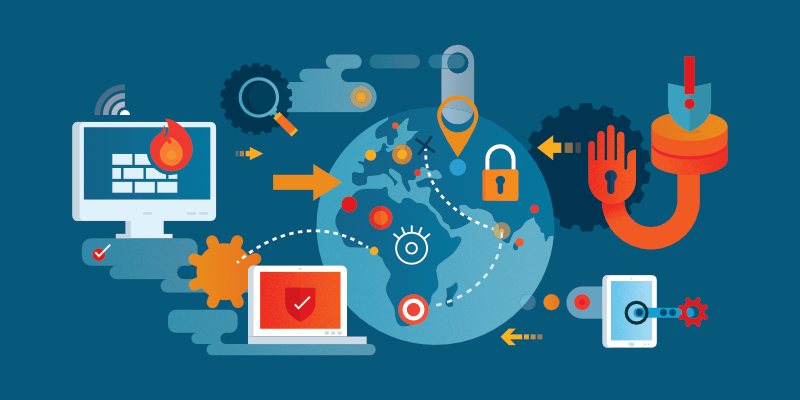
Understanding Cybersecurity Risks for SMBs
Small businesses face a growing number of cybersecurity risks in today’s digital landscape. As technology continues to advance, so do the methods used by cybercriminals to exploit vulnerabilities. Understanding these risks is crucial for SMBs to effectively protect their sensitive data and assets.
One of the main cybersecurity risks for SMBs is phishing attacks. These attacks involve tricking employees into revealing sensitive information, such as login credentials or financial details, through fraudulent emails or websites. Phishing attacks can lead to data breaches and financial losses.
Another significant risk is ransomware. Ransomware is a type of malicious software that encrypts a company’s files and demands a ransom payment to restore access. SMBs are often targeted by ransomware attacks because they may have weaker security measures in place compared to larger organizations.
Additionally, SMBs are vulnerable to insider threats, where employees or contractors intentionally or unintentionally compromise security. This can include actions such as unauthorized data access, sharing sensitive information with external parties, or falling victim to social engineering tactics.
By understanding these risks, SMBs can better prioritize their cybersecurity efforts and allocate resources to implement effective security measures.
Implementing Effective Security Measures
To protect against evolving cyber threats, SMBs need to implement effective security measures. These measures should be tailored to the specific needs and budget of the small business.
One of the first steps in implementing effective security measures is securing the network. This includes using firewalls, implementing secure Wi-Fi protocols, and regularly updating network equipment and software.
Another important measure is implementing strong access controls. This involves using strong passwords, multi-factor authentication, and regularly reviewing and revoking access privileges for employees and contractors.
Regularly updating and patching software is also essential to address any known vulnerabilities that could be exploited by cybercriminals. SMBs should ensure that all software, including operating systems, applications, and plugins, are kept up to date.
In addition, SMBs should consider implementing encryption for sensitive data, both at rest and in transit. This can help protect against unauthorized access and data breaches.
Lastly, it is crucial for SMBs to have a backup and recovery plan in place. Regularly backing up important data and testing the restoration process can help mitigate the impact of a cyber incident.

Training Employees on Cybersecurity Best Practices
One of the weakest links in a small business’s cybersecurity defenses is often its employees. It is essential to provide comprehensive training on cybersecurity best practices to ensure that employees are aware of the potential risks and know how to protect sensitive information.
Training should cover topics such as identifying phishing emails, using strong passwords, recognizing social engineering tactics, and securely handling and transmitting sensitive data.
Employees should also be educated on the importance of regularly updating software, avoiding suspicious websites and downloads, and reporting any security incidents or concerns to the appropriate personnel.
Regular training sessions, combined with ongoing communication and reminders, can help reinforce cybersecurity best practices and create a culture of security within the organization.
Utilizing Advanced Threat Detection Technologies
As cyber threats continue to evolve, SMBs need to leverage advanced threat detection technologies to identify and mitigate potential attacks.
One such technology is intrusion detection and prevention systems (IDPS). These systems monitor network traffic and identify any suspicious or malicious activity. IDPS can help detect and block unauthorized access attempts, malware infections, and other cyber threats.
Another important technology is endpoint protection, which includes antivirus software, firewalls, and other security features installed on individual devices. Endpoint protection can help detect and block malware, prevent unauthorized access, and provide real-time threat intelligence.
SMBs can also benefit from security information and event management (SIEM) systems. These systems collect and analyze security event data from various sources, such as network devices, servers, and applications. SIEM solutions can help identify patterns and anomalies that indicate a potential security incident.
By utilizing these advanced threat detection technologies, SMBs can enhance their cybersecurity defenses and proactively detect and respond to potential threats.
Creating a Cyber Incident Response Plan
Despite the best efforts to prevent cyber incidents, it is crucial for SMBs to have a well-defined cyber incident response plan in place. This plan outlines the steps to be taken in the event of a cybersecurity breach or incident.
The first step in creating a cyber incident response plan is identifying the key personnel responsible for responding to and managing the incident. This includes designating a response team and assigning specific roles and responsibilities.
Next, the plan should outline the steps to be taken in the event of a security incident. This includes isolating affected systems, collecting evidence, notifying relevant stakeholders, and containing the incident to prevent further damage.
Additionally, the plan should include a communication strategy to keep employees, customers, and other stakeholders informed about the incident and any actions being taken to mitigate the impact.
Regular testing and updating of the cyber incident response plan is essential to ensure its effectiveness and readiness. By having a well-prepared and practiced plan, SMBs can minimize the impact of a cyber incident and recover more quickly.
To find out how M-Squared Networks can help your business, please contact us!
